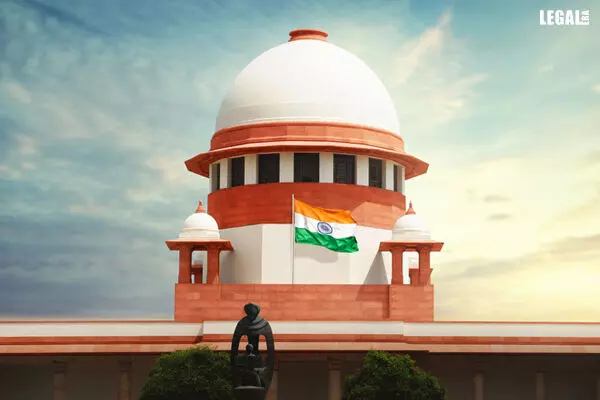- Home
- News
- Articles+
- Aerospace
- Agriculture
- Alternate Dispute Resolution
- Banking and Finance
- Bankruptcy
- Book Review
- Bribery & Corruption
- Commercial Litigation
- Competition Law
- Conference Reports
- Consumer Products
- Contract
- Corporate Governance
- Corporate Law
- Covid-19
- Cryptocurrency
- Cybersecurity
- Data Protection
- Defence
- Digital Economy
- E-commerce
- Employment Law
- Energy and Natural Resources
- Entertainment and Sports Law
- Environmental Law
- FDI
- Food and Beverage
- Health Care
- IBC Diaries
- Insurance Law
- Intellectual Property
- International Law
- Know the Law
- Labour Laws
- Litigation
- Litigation Funding
- Manufacturing
- Mergers & Acquisitions
- NFTs
- Privacy
- Private Equity
- Project Finance
- Real Estate
- Risk and Compliance
- Technology Media and Telecom
- Tributes
- Zoom In
- Take On Board
- In Focus
- Law & Policy and Regulation
- IP & Tech Era
- Viewpoint
- Arbitration & Mediation
- Tax
- Student Corner
- AI
- ESG
- Gaming
- Inclusion & Diversity
- Law Firms
- In-House
- Rankings
- E-Magazine
- Legal Era TV
- Events
- News
- Articles
- Aerospace
- Agriculture
- Alternate Dispute Resolution
- Banking and Finance
- Bankruptcy
- Book Review
- Bribery & Corruption
- Commercial Litigation
- Competition Law
- Conference Reports
- Consumer Products
- Contract
- Corporate Governance
- Corporate Law
- Covid-19
- Cryptocurrency
- Cybersecurity
- Data Protection
- Defence
- Digital Economy
- E-commerce
- Employment Law
- Energy and Natural Resources
- Entertainment and Sports Law
- Environmental Law
- FDI
- Food and Beverage
- Health Care
- IBC Diaries
- Insurance Law
- Intellectual Property
- International Law
- Know the Law
- Labour Laws
- Litigation
- Litigation Funding
- Manufacturing
- Mergers & Acquisitions
- NFTs
- Privacy
- Private Equity
- Project Finance
- Real Estate
- Risk and Compliance
- Technology Media and Telecom
- Tributes
- Zoom In
- Take On Board
- In Focus
- Law & Policy and Regulation
- IP & Tech Era
- Viewpoint
- Arbitration & Mediation
- Tax
- Student Corner
- AI
- ESG
- Gaming
- Inclusion & Diversity
- Law Firms
- In-House
- Rankings
- E-Magazine
- Legal Era TV
- Events
Supreme Court Establishes Guidelines For Portraying Persons With Disabilities In Visual Media

Supreme Court Establishes Guidelines For Portraying Persons With Disabilities In Visual Media
The Supreme Court Bench, led by Chief Justice of India (CJI) DY Chandrachud and Justice JB Pardiwala, established guidelines for representing persons with disabilities (PwDs) in visual media during a hearing on the case Nipun Malhotra v. Sony Pictures Films India Pvt Ltd.
The case addressed concerns over disparaging remarks targeting PwDs in the film Aankh Micholi. The court emphasized the need to differentiate between humor that fosters understanding of disability and humor that perpetuates its denigration.
"There have been jokes made about disabled people for comic relief. This understanding is obsolete under the new social model. This lack of familiarity arises due to inadequate representation of the disabled in dominant discourse. We must distinguish between disability humor, which helps in understanding the disabled, and disablement humor, which denigrates it," the Court said.
The Supreme Court has set forth comprehensive guidelines for the portrayal of persons with disabilities (PwDs) in visual media, aligning with constitutional anti-discrimination principles and the Rights of Persons with Disabilities (RPwD) Act:
i. Avoid using derogatory terms like 'crippled' that perpetuate institutional discrimination and create negative self-images.
ii. Refrain from using language that ignores the societal barriers faced by individuals with disabilities.
iii. Ensure that portrayals in visual media accurately depict the lived experiences of PwDs, avoiding one-dimensional, ableist characterizations.
iv. Showcase the diverse lives of PwDs, highlighting their active roles as valuable members of the community across various domains.
v. Ensure creators verify medical facts to prevent misinformation that could lead to increased discrimination, such as misconceptions about sensory abilities.
vi. Avoid perpetuating myths or stereotypes, such as portraying individuals with disabilities as having superhuman sensory powers, which do not universally apply.
vii. Uphold the principle of 'nothing about us without us,' ensuring meaningful participation and consultation with disability advocacy groups in decision-making processes.
The Supreme Court underscored the importance of training and sensitization programs and referenced the Convention on the Rights of Persons with Disabilities, emphasizing accurate portrayals after consultation with rights advocacy groups.
Earlier, disability rights activist Nipun Malhotra raised concerns about derogatory references to PwDs in a film and its trailer. Following the dismissal of Malhotra's plea by the Delhi High Court, the matter was brought to the Supreme Court for consideration after the High Court noted India's existing prior censorship laws.



